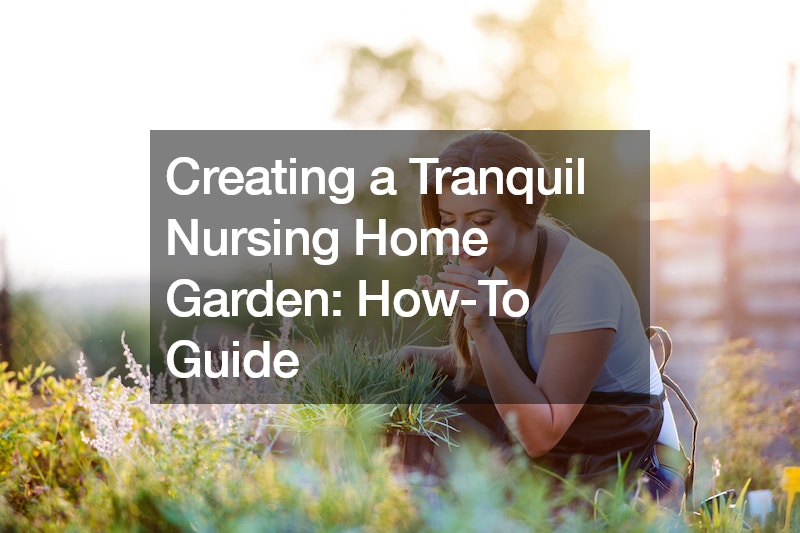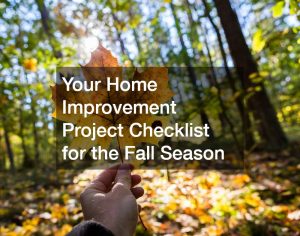Creating a tranquil nursing home garden involves more than beautiful trees and plants. It combines diverse features such as lighting, water, and plants for an intimate oasis that’s therapeutic for the mind, soul, and body. The intimate space, whether big or small, should be a relaxing, serene place of escape from the busy, hectic world. Ideally, green spaces help in recovery, reduce the risk of heart disease, relieve stressful situations, and ultimately lower blood pressure. The following ten guidelines are ideal for creating a serene nursing home garden.
1. Selecting the Right Garden Equipment for Nursing Home Gardens

Equipment and tools for a nursing home garden are unequal; hence, picking the appropriate ones is crucial to a successful landscaping experience. Using suitable garden equipment and tools enhances safety, energy, and quality of work. Purchasing gardening tools and equipment from garage sales can guarantee significant discounts on quality tools.
When faced with pricing challenges, prioritize quality. This will help you avoid repeat purchases. Durable, high-quality equipment gives you value for money and fewer breakdowns. Ensure the equipment handles are made of suitable materials that are comfortable, easy to clean, padded, have an ergonomic grip, and don’t break down easily.
Whenever possible, choose tools with interchangeable heads. They are usually of higher quality than their non-interchangeable counterparts. Choose equipment with a warranty and is easy to keep in good shape. Purchase from a reputable offline local store since you can check the equipment’s suitability and get recommendations from sales representatives or store owners. Avoid online purchases, as they don’t allow one to handle the equipment before purchasing.
2. Choosing Therapeutic Flowers for Nursing Home Gardening

Both indoor and outdoor therapeutic gardens require purposeful plant or flower placement, depending on the desired interaction with nature’s elements. It’s essential to consider the medical conditions and cognitive impairments of the vulnerable population in the nursing home. When screening flowers and plants for the home garden, look out for thorns, toxicity, caustic, hazardous, and irritating properties. Avoid plants with unruly growth tendencies to ease garden management.
All flowers for gardening, be it hanging baskets, raised planters, or in-ground gardens, should consider factors such as the clients’ cultural familiarity, ease of care and growth, garden scale, and unique sensory qualities. Sensory-engaging plants provide combinations of sensations such as olfactory, gustatory, visual, aural, and tactile encounters in the garden. Nector plants such as Tithonia and Pineapple sage attract hummingbirds and butterflies. Pollinator plants like bronze fennel and dill are great for observing caterpillars as they browse. They evoke a sense of awe and wonder.
Examples of ornamental plants and herbs in a garden include fragrant lavender and rosemary, citrus-scented herbs like lemon verbena, lemon balm, lime basil, lemon thyme, orange-scented geranium, grapefruit, and mint. Various basils, such as purple-leafed, Thai, cinnamon, boxwood, or standard sweet basil, are ideal for culinary use in herbal compound butter, savory recipes, and mixed planting.
Scented geraniums are ideal for indoor or outdoor use as they invoke visual, tactile, olfactory, and gustatory sensations. They have diverse bloom colors, leaf textures, fragrances, and multiple herbal uses. They are also used in plant propagation and potpourri-making. Ornamental grass, such as lemongrass, Mexican feather, or pink muhly grass, is excellent for visual and aural stimulation. They provide great garden texture all year round, not forgetting the sounds and movement they make in the wind.
3. Hiring a Skilled Fence Builder for Nursing Home Security and Serenity
A tranquil nursing home garden requires the services of a professional fence builder who prioritizes security and serenity needs and can work with diverse fences. You can choose from wood privacy, aluminum, PVC/Vinyl, chain link, or post and rail fences. A garden fence should be functional and incorporate exceptional craftsmanship to enhance privacy, security, and aesthetic appeal. It should be durable and of high standards.
To minimize stress when hiring a professional fence builder, ask family and friends for referrals or check online reviews for recommendations. This way, you stand a better chance of giving your nursing home a therapeutic garden with unmatched safety, security, and beauty, all within your budget. The type of fence you ultimately install depends on your budget.
Once you’ve considered the costs, the property has been surveyed, and the timeline and deadlines set, get a written installation contract from the fencing contractor. Only sign it after all your inquiries have been addressed satisfactorily. Cultivate a trust-based relationship with your fencing contractor by working closely with them. This increases the chances of successful fence installation.
4. Working with Paving Contractors for Accessible Pathways in Nursing Home Gardens
A nursing home garden must be accessible to all residents and visitors. It must consider wheelchair users; hence, paving contractors must create wheelchair-accessible garden paths. This allows extensive garden exploration. Work with paving contractors to design easy-to-navigate garden paths using appropriate materials.
Paving contractors have expert design knowledge and can create stable, durable, safe, and wheelchair-accessible paths in tranquil nursing home gardens. They consider smoothness, turning spaces, and path width to accommodate wheelchairs without compromising safety. The design should factor in using adaptive tools for people in wheelchairs. It should also incorporate appropriate irrigation systems and make provision for growing low-maintenance plants to enable wheelchair users unrestricted access so they can enjoy both gardening and the therapeutic perks of nature right within the precincts of the nursing home.
Constructing wheelchair-accessible paths in the garden fosters hospitality and diversity since everyone can access the garden regardless of their mobility aids, whether using walkers, wheelchairs, or strollers. It positively impacts the well-being of nursing home residents, allowing them to relax, exercise, or engage in outdoor activities while appreciating the therapeutic effects of the flora and fauna. There should be minimal impediments, if any, to the pathways for the safety of users.
Accessible pathways are one way of adhering to accommodation guidelines and embracing inclusiveness. The materials used by the paving contractors should consider traction, stability, durability, and ease of use. Suitable materials for wheelchair-accessible paths include pavers, washed crushed gravel, resin-bound gravel, flagstone, and clay bricks.
5. Maintaining a Safe and Comfortable Environment: Pest and Lawn Equipment Tips

Integrated pest management (IPM) is ideal for maintaining pest-free, safe, attractive lawns and tranquil gardens. However, nature dictates that one must continually manage these environments since living things constantly seek shelter, food, and water with or without express permission. To keep the environment pest-free, one needs appropriate pest and lawn equipment.
IPM considers fungus on trees, weeds in the lawn, ants, or unwanted deer in the garden as pests. A nursing home garden can benefit from IPM since this approach effectively and permanently suppresses pests. However, to limit exposure, it’s best to avoid using pesticides, and if you must, contact trusted sources on the least toxic pesticide.
Tips to remember while implementing IPM for your lawn, home, and garden include destroying diseased plants and cleaning up debris at the end of the season.
Opt for pest-resistant trees, shrubs, and plants that are compatible with the climate and soil. Mulch the base of trees, and avoid injuring tree trunks and exposing them to pests when using lawn equipment. Boost the environment for beneficial insects that kill pests, adequately fertilize your lawn, and combat weeds by hand digging and spot treating.
6. Efficient Fence Installations for Privacy and Tranquility in Nursing Home Gardens

Fence installations are an effective way of enhancing privacy and tranquility in a nursing home garden, and this is crucial, especially when exposed to tall buildings, passers-by, or neighbors. This provides nursing home residents and visitors a place to unwind without feeling awkward, all in a pleasant private spot. Armed with a budget, the appropriate tools, and creative ideas, a fence contractor can make a garden a veritable private relaxing spot.
A cost-effective, moveable roll screen fence featuring diverse materials, such as wood, bamboo, fabric, or vinyl, can be tailor-made and installed to keep prying eyes off. It’s great when you don’t want to alter the nursing home landscape permanently. Roll screen fences are flexible and can take any shape or dimension.
Garden screen panels are stylish and can be used to create partitions and differently styled rooms in the garden to enhance privacy. Some comprise of corten steel or timber. Its cut-out shapes or motifs can accommodate plants, giving an extra layer of privacy wherever they are. Freestanding garden screens are art forms that immediately impact the garden and can be relocated whenever you deem fit.
7. Ensuring Safety and Aesthetics: Professional Tree Removal Services for Nursing Homes
A tranquil nursing home garden requires tree removal services to ensure the safety of the residents. They do this by maintaining amenity trees, pruning, trimming, repairing, and lopping. Their ground operations include wood chipping, root pruning, and stump grinding.
Professional tree removal services apply safety guidelines while at work. For instance, evergreen trees are lightly pruned in late winter, while pruning and trimming deciduous trees is done in early winter or late fall when trees have shed their leaves and trunks are bare, exposing the tree structure. Avoid trimming trees in wet, stormy, icy, or windy weather.
Use appropriate tools to trim the trees and maintain the aesthetics of clean cuts. Working with the appropriate tools helps one achieve safety and efficiency. Inspect the trees and environs for potential hazards, which include broken tree limbs and electrical lines, and use tools you are well-trained in. Dress appropriately when on the job, and don’t use tools like trimmers and chainsaws without protective equipment like protective helmets, goggles, gloves, close-fitting clothes, or heeled shoes with non-slip soles.
8. Comprehensive Tree Services for Nursing Home Gardens
A garden would benefit significantly from comprehensive tree services. To maintain the well-manicured landscapes, green canopies, and the tranquil atmosphere in your nursing home garden, look at trees from a wholesome perspective, like arboriculture. This involves keen observation and swift hands to tackle tree challenges to ensure they remain green, appealing, and healthy, even when faced with storms.
Comprehensive tree services involve diagnosing and treating tree ailments, recommending best practices regarding suitable soil types for chosen plants, and tackling specific climate and related pest issues. Use tools, knowledge, experience, and passion to handle tree challenges and bring balance to the ecosystem. Contact comprehensive tree services whenever you need to manage diseases or deal with large tree issues, complex projects, and emergencies.
9. Creating a Serene Night Atmosphere: Landscape Lighting Installations for Nursing Home Gardens

Landscape lighting installations can transform your garden into a tranquil, ambient place at night. Garden lighting transforms your nursing garden landscape into a serene space where residents can unwind or stroll at night when the weather allows. Creative lighting enhances your outdoor space’s aesthetic appeal while improving the security of your garden. You can transform your garden into a magical wonderland and, at the same time, keep potential intruders out.
To install lighting in your garden, start with a carefully thought-out lighting design. Consider layered lighting using accent, ambient, and task lighting for a visually appealing, balanced design. You can highlight focal points by illuminating the most striking features of your garden, such as a unique sculpture or a beautiful tree. Next, light the pathways and steps to guide residents around your garden at night.
Besides maintaining the aesthetic appeal of your garden at night, such lights enhance your residents’ safety. You can also enhance lighting in your nursing home garden by using appropriate fixtures to accentuate its style. For instance, you can use fixtures that, when illuminated at night, give off a rustic or traditional feel. Lastly, go for energy-efficient LEDs that come in various colors to create the perfect mood for your garden.
10. Expert Advice: The Role of Arborists in Nursing Home Garden Management
You may ask yourself what a nursing home gains by hiring an arborist. Well, arborists are experts in tree care. They understand what your trees need and have the skills to care for them. Consider hiring an arborist occasionally to keep your trees in an impeccable state.
If trees aren’t properly maintained, they could become a dangerous liability. It’s dangerous work to remove or prune trees, especially when done by someone without proper training. An arborist will carefully prune your trees, provide professional tree removal services and emergency tree care, plant suitable trees for you, and provide other services, such as preventive tree maintenance, soil aeration, tree disease, and pest treatment.
Creating a tranquil garden involves more than tree management. It encompasses an ecosystem that requires expert tree services to impact the residents positively. Paving contractors, fence installers, and arborists are crucial assets that a nursing home garden must have on speed dial.





